GENERAL DATA
Plant Parts: Stem, leaf, flower, and fruit
Cultivation mode: Wild collection/ Cultivated
Industrial Applications: Laboratory research, fragrance extraction, herbarium reference, botanical ingredient supply for non-ingestible products.
🌿 Industries That Use Ephedra Herb (Ephedra intermedia) – Aerial Stems
Ephedra intermedia, commonly known as Ma Huang or simply Ephedra herb, is a shrubby desert plant native to Central Asia, Iran, and the Himalayas. The aerial parts (stems) are harvested and used for their stimulating, bronchodilatory, and metabolic properties. The plant is a natural source of ephedrine alkaloids, traditionally prized in medicine and now heavily regulated in many countries.
1. Pharmaceutical & Traditional Medicine Industry
Primary Sector of Use – Widely applied in Traditional Chinese Medicine (TCM), Persian medicine, and Unani formulations, as well as in some modern regulated pharmaceuticals.
Applications:
-
Bronchodilator & Decongestant
Traditionally prescribed for asthma, bronchitis, sinus congestion, and cold-related respiratory issues. -
Stimulant & Thermogenic Agent
Historically used to increase energy, promote heat generation, and support weight management (often in carefully controlled combinations). -
Circulatory & Blood Pressure Support
Applied in traditional contexts to stimulate circulation and elevate low blood pressure.
✅ Forms:
Decoctions, herbal powders, tinctures, and standardized tablets/capsules (only in regulated medical formulations).
2. Herbal & Nutraceutical Industry
Although many countries strictly regulate ephedrine-containing products, alkaloid-reduced or ephedrine-free Ephedra extracts continue to find limited use in certain markets.
-
Energy & Performance Support
Incorporated into products as ephedrine-free formulations or in regions with more flexible regulations. -
Traditional Herbal Supplements
Used in herbal blends and tonics where regulatory frameworks permit.
Common Product Forms:
-
Cold & flu relief herbal combinations
-
Adaptogenic and stamina-supporting powders
-
Herbal teas traditionally linked with respiratory health
Labeling Note:
In most jurisdictions, manufacturers must clearly indicate ephedrine content or specify “ephedrine-free” status to comply with regulatory requirements.
3. Weight Management & Sports Performance
Historical Applications:
Ephedra–caffeine combinations were historically included in fat-burning and energy-boosting products.
Current Use (Traditional / Regional):
-
Some traditional and regional formulations still exist in Middle Eastern, South Asian, and Eastern European markets.
-
Occasionally used under supervision in certain traditional medicine practices.
Safety Note:
-
Products containing ephedrine are strictly regulated due to cardiovascular risks.
-
Modern supplements typically avoid ephedrine or clearly label “ephedrine-free” formulations.
4. Traditional & Ethnic Markets
Ephedra herb is still widely sold in:
-
Traditional Persian apothecaries
-
TCM shops and Ayurvedic retailers
-
Middle Eastern bazaars
It is sold as:
-
Dried aerial stems
-
Powdered herb
-
Mixed in multi-herb decoctions for seasonal respiratory support
5. Academic & Botanical Research
Studied for:
-
Ephedrine and pseudoephedrine alkaloid content
-
Plant pharmacokinetics and regulatory pathways
-
Sustainable harvesting due to overexploitation in native regions
✅ Summary of Key Applications
| Industry | Common Uses |
|---|---|
| Pharmaceutical & Traditional | Bronchodilator, energy tonic, stimulant for asthma, flu, and fatigue |
| Herbal & Nutraceutical | Respiratory support blends, energizers, metabolism enhancers |
| Weight Loss & Sports | (In certain regions) Fat burners, pre-workout boosters (alkaloid-free or legacy use) |
| Ethnic & Traditional Market | Herbal shops and decoction mixes in TCM, Persian and Unani medicine |
| Academic & Botanical Research | Studies on ephedrine biosynthesis, toxicity, conservation |
🌱 Key Features:
-
100% aerial stems (no roots or flowers used)
-
Source of natural ephedrine alkaloids (if unprocessed)
-
Must be handled according to local regulations
-
Prized in traditional medicine systems for centuries
PRODUCT NAME IN DIFFERENT LANGUAGES
Persian Name: ریش بز، ارمک، افدرا، هوم/ Rishboz, Ormak, Efedra, Houm
German Name (Deutschland, Austria, Switzerland): Blauer Meerträubel, Ephedra
French Name (France, Belgium, Switzerland, Quebec): Ephedra intermedia, Zhong Ma Huang
HARVEST CALENDAR
Feb
Mar
Apr
May
Jun
Jul
Aug
Sep
Oct
Nov
Dec
To order Ephedra, please contact us.
About Ephedra Intermedia
It is a shrub that reaches one meter in height and has many species.
This shrub has many stems that grow densely. These stems are very narrow, strapped, and grayish green, and their cross section is circular.
The leaves of this shrub are very small, triangular, and pointed, and often grow in twos or threes on the stems. These leaves get dried quickly.
The male flowers of this shrub are yellow and very small and usually grow in the form of three dense spikes on the stems. Its female flowers are also very small and grow on the stems. Each female flower usually has six small leaves that grow two by two in pairs. These small leaves are the sepals of female flowers. The flowers of some ephedra species have pedicels and others do not.
The fruits of this small shrub are pinkish red and sometimes orange. Each fruit consists of a small and swollen part. The seeds are small, almond-shaped, slightly elongated, pointed, and rich brown.
Ephedra Temperament
Hot and dry.
Ma Huang Chemical Constituents
It has a complex chemical composition and contains various types of compounds, including alkaloids, flavonoids, tannins, polysaccharides, and organic phenolic acids.
Alkaloids are the main active components of this plant, in which a total of 29 have been identified: Ephedradine, Feruloylhistamine, Ephedrine, Pseudoephedrine, Norephedrine, Noreseudoephedrine, Methylephedrine, Methylpseudoephedrine, Ephedroxane, Dimethyl-5-pheyloxazolidine, Trimethyl-5-phenyloxazolidine, O-benzoyl-L(+)-pseudoephedrine, O-benzoyl-D(–)-ephedrine, Hordenine, oxopyrrolidine-2-carboxamide, Transtorine, Methoxykynurenic acid, Kynurenic acid, Hydroxykynurenic acids, Ephedralone, Methanoproline, Maokonine, Tetramethylpyrazine, Benzylamine, N-methybenzlamine.
More than 40 kinds of flavonoids, such as quercetin, luteolin, and rutin, have been isolated from this plant. The results of pharmacological studies have shown that flavonoids in this plant can scavenge diphenylpicrohydrazide free radicals, and the strength of its antioxidant effect is related to the number and structure of hydroxyl groups of its active ingredients.
The tannins make up a class of polyphenolic compounds with complex structures that are widely found in plants. They usually exist in condensed form, including dimer, trimer, and tetramer proanthocyanidins, as well as hydrolytic tannins. The latest method for detecting tannins is gel permeation chromatography, developed by a team from Japan.
Polysaccharides are macromolecular components in this plants. At present, the main polysaccharides isolated from it are polysaccharides A, B, C, D, and E, and hyperbranched acidic polysaccharides. Among them, the relative molecular masses of its polysaccharides A, B, C, D, and E are 1.2 × 106, 1.5 × 106, 9 × 104, 6.6 × 103, and 3.4 × 104, respectively. In addition, when these stems were continuously extracted by the water extraction method (liquid–solid ratio 5) in a water bath at 90 °C for 3 h, the monosaccharide composition of the water-soluble polysaccharides in it was obtained as 43.1% glucose, 36.4% galactose, 14.9% mannose, 3.7% arabinose, and 1.7% gluconic acid.
Separated phenolic acids, such as nebrodenside A, nebrodenside B, and O-coumaric acid glucoside, from Ephedra for the first time in 2005. Since then, scientists have also successively separated organic acids such as trans-cinnamic acid and syringin from Ephedra.
The volatile oil in Zhong Ma Huang is one of its medicinal material bases. The content of volatile oil in Zhong Ma Huang is low, at only approximately 0.15%. Different planting methods, processing methods, and extraction techniques affect the content of volatile oil in Zhong Ma Huang.
In addition to the above compounds isolated and identified from Zhong Ma Huang, other ingredients such as lignans, naphthalenes, esters, terpenoids, and quinones have been identified.
Traditional Uses & Reported Benefits of Ephedra (Ephedra intermedia)
Traditional Uses (Historical/Reference Only):
-
Used in various traditional systems to support respiratory and circulatory function (respiratory relief, circulation, mild thermogenic effect).
Important Safety Notice:
Ephedra contains potent ephedrine alkaloids and poses serious health risks. This product is strictly for research, herbarium, or industrial use. Never consumed or used for self-medication.
Zhong Ma Huang is a diuretic, emmenagogue, sudorific, brain and nerve assuasive, nasal decongestant, fat burner, and chest decongestant.
This plant helps to cure fever, rheumatism, pertussis, urinary retention, and uterine discomfort after childbirth. Drinking the extract of this plant is tonic for the heart and improves asthma. It reduces polydipsia tumors. It is an effective antidote for scopolamine poisoning, and for this reason, scopolamine is usually mixed with ephedrine, then get used.
As an effective substance for stimulating the central nervous system, ephedrine increases the process of basal metabolism. It means that it forces the body to burn the absorbed food calories faster. Caffeine, which is present in tea, coffee, cocoa, Coca-Cola, etc., intensifies the weight loss effect of ephedrine. Both caffeine and ephedrine are powerful stimulants, and when taken together, they cause insomnia, anger, irritation, and haste.
A study shows that ephedrine helps smokers reduce their cravings. Therefore, if you want to quit smoking, with considering the side effects of ephedrine and your doctor consultation, you can use it within the permitted dosage.
Drinking a decoction of the stems of the Zhong Ma Huang plant is useful for colds and flu.
Drinking its fruit extract helps to treat respiratory diseases.
In India, the aqueous extract of this plant, which has a bitter and astringent taste, is used to control asthma attacks. The tincture of Zhong Ma Huang is prescribed to strengthen the heart and stimulate blood circulation. In the former Soviet Union, a decoction of ephedra stems and roots is used to treat rheumatism and syphilis. The extract of Zhong Ma Huang fruits is effective for relieving respiratory tract discomfort.
In China, this plant is used to stimulate the brain and nerve centers against fatigue and anxiety. It also increases the blood pressure due to the reduction of the diameter of the vessels and the contraction of the vessels. It makes the bowel movements slow down. It calms down the contraction of the bronchi and relieves asthma. It stimulates the secretion of saliva and gastric fluids. Accelerates uterine movements. It opens the pupil of the eye (its topical application in the eye). Relieves vomiting.
**Usage & Safety Advisory:**
Do not consume. Dose instructions are not provided; any applied dosage should be determined by licensed professionals under strict regulatory conditions.
Ephedra Side Effects
Ephedra is harmful to pregnant women, nursing women, children under two years old, the elderly, patients with heart disease, and those with high blood pressure, hyperthyroidism, and diabetes. Zhong Ma Huang causes dry mouth and anxiety.
Most researchers believe that it is better to use pseudoephedrine instead of ephedrine because the side effects of pseudoephedrine are much less than ephedrine, but herbal medicine experts recommend that you should always use medicinal products made from the plant itself, because it is healthier and is less harmful and more effective than ephedrine or pseudoephedrine which is isolated from the plant.
**Phytochemical Profile (Approximate):**
Ephedrine alkaloids: 0.5–2%; includes ephedrine & pseudoephedrine. Contains flavonoids and phenolic acids.
*Values are for educational reference only. Not to be used for dietary purposes.*
To order Ma Huang, please contact us.

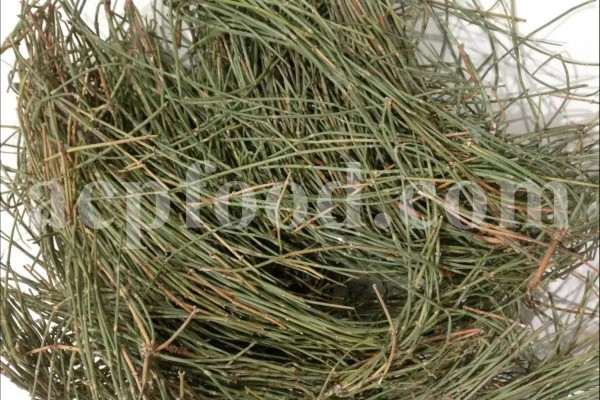



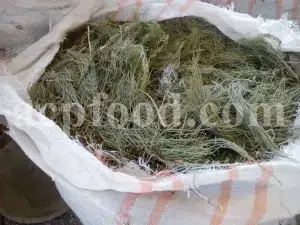
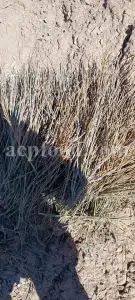
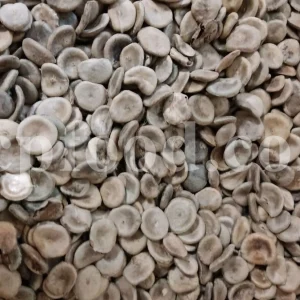
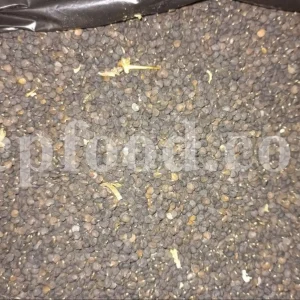


Reviews
There are no reviews yet.